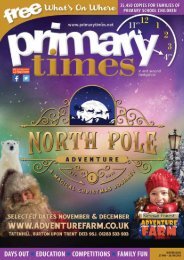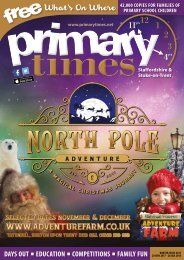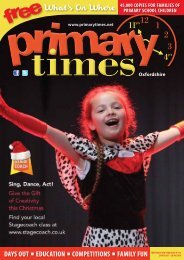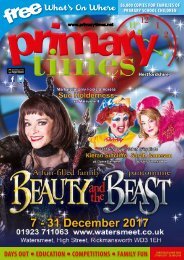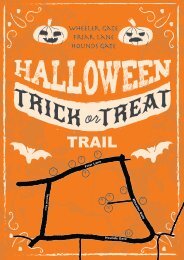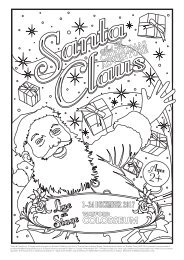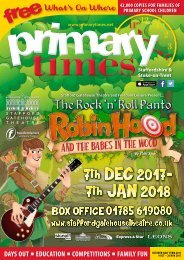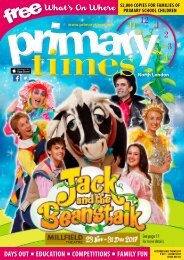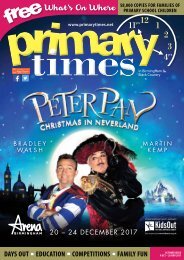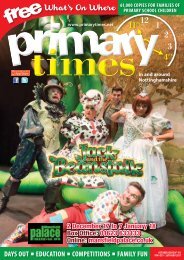You also want an ePaper? Increase the reach of your titles
YUMPU automatically turns print PDFs into web optimized ePapers that Google loves.
N<br />
ew Year is a time that<br />
is celebrated by all regardless<br />
of the nationality and cultural<br />
background. Most people believe that the<br />
New Year gives them an opportunity to put<br />
bad times behind them and look forward<br />
to the coming year and its promises of<br />
love, wealth and good times. New Year<br />
is considered the best time to make<br />
promises and resolutions - in Scotland we<br />
mostly use it as an excuse to hold a party!<br />
In Scotland Christmas was not celebrated<br />
as a festival until the 1950s, instead<br />
many Scots worked over Christmas and<br />
celebrated their winter solstice holiday<br />
at New Year when family and friends<br />
would gather for a party and to exchange<br />
presents, which came to be known as<br />
hogmanays.<br />
Most of our Hogmanay traditions stem<br />
from the belief that you have to have your<br />
house in order before midnight on the<br />
31st December: the underlying message<br />
being to clear out the remains of the old<br />
year, have a clean break and welcome in a<br />
young, New Year on a happy note.<br />
The most well know traditions are still<br />
followed today:<br />
FIRST FOOTING<br />
First Footing is still common across<br />
Scotland. Traditionally it is believed that<br />
your new year will be a prosperous one<br />
if, at the stroke of midnight, a “tall, dark<br />
stranger” appears at your door with a lump<br />
of coal for the fire, or a cake or coin. In<br />
exchange he will be offered food, wine or<br />
a wee dram of whisky. The dark stranger<br />
is believed to be a throwback to Viking<br />
times when a big blonde stranger arriving<br />
on your door step with a big axe meant<br />
big trouble, and probably not a very happy<br />
New Year!<br />
REDDING<br />
Redding is essentially the equivalent of<br />
a spring clean - done on New Year’s Eve.<br />
Households must be spick and span by<br />
the time the bells arrive, so that the New<br />
Year can be welcomed with a clean slate<br />
(or house, in this case). In generations<br />
gone by, all fires were cleared of ashes<br />
so that new ones could be started. It is<br />
also a time to repay all outstanding debts.<br />
And so with a clean house -- both literally<br />
and figuratively -- the household could<br />
commence celebrations with a light heart<br />
and a clear conscience.<br />
LOONY DOOK<br />
For 30 years South Queensferry residents<br />
have gathered on New Year’s Day to take<br />
a dip in the ‘refreshing’ (or more likely,<br />
freezing) waters of the River Forth. Initially<br />
conceived by a small band of brave locals<br />
as a hangover cure, the Loony Dook now<br />
attracts around 1,500 Dookers with 4,000<br />
spectators cheering them on.<br />
BA’ GAME<br />
The Ba’ is a traditional street football game<br />
and is played every Christmas and New<br />
Year’s Day in Kirkwall, Orkney. The game is<br />
played in the streets of the town between<br />
the Uppies and the Doonies. The Doonies<br />
goal is the sea and The Uppies must round<br />
Mackinson’s corner at the junction of Main<br />
Street. There can be upwards of 300 men<br />
playing and the game can last several<br />
hours.<br />
FIREBALLS<br />
The firework displays and torchlight<br />
processions now enjoyed throughout<br />
many cities in Scotland are reminders<br />
of the ancient pagan parties from those<br />
Viking days of long ago. One of the most<br />
spectacular Fire ceremonies takes place<br />
in Stonehaven, just south of Aberdeen.<br />
Giant fireballs, weighing up to 20 pounds<br />
are lit and swung around on five feet long<br />
metal poles, requiring 60 men to carry<br />
them as they march up and down the<br />
High Street. The roots of this tradition is<br />
likely based on the desire to ward off evil<br />
spirits and to endow the fishing fleet with<br />
luck. The Fireball swingers each make<br />
their own fireballs by filling wire baskets<br />
with a mixture of flammable materials.<br />
Participants keep their recipes secret but<br />
the object is to create a fireball that will<br />
stay lit and burn brightly for a long time.<br />
AULD LANG SYNE<br />
Auld Lang Syne is one of Scotland’s<br />
gifts to the world, recalling the love and<br />
kindness of days gone by. The poem,<br />
written by Robert Burns, is recognised all<br />
over the world and is sung at gatherings<br />
from Edinburgh to New York’s Times<br />
Square.<br />
SOME OF THE MORE SPECTACULAR<br />
CELEBRATIONS TAKING PLACE THIS YEAR<br />
Edinburgh’s Hogmanay is the biggest<br />
New Year’s Eve party in the world. It<br />
lasts an impressive 3 days and consists<br />
of a Torchlight Procession, Street Party,<br />
Concert in the Garden and Old Town<br />
Ceilidh accompanied by hourly fireworks<br />
displays from 9pm. The grand finale is the<br />
famous Midnight Moment which lights up<br />
the skies above the capital from Edinburgh<br />
Castle and Calton Hill.<br />
Stirling Hogmanay – A Carnival of Light<br />
and Sound with a parade along King<br />
Street. Kings Park will provide 2 hours of<br />
free entertainment and at the stroke of<br />
midnight expect spectacular fireworks.<br />
The Stonehaven Fireballs - At the stroke<br />
of midnight on December 31 a crowd of<br />
strong Scots, most in kilts, light up the high<br />
street of Stonehaven by whirling balls of<br />
flame and sending showers of sparks into<br />
the watching crowd.<br />
The Comrie Flambeaux Procession<br />
- At midnight eight flambeaux, or fiery<br />
torches, begin their procession around the<br />
Perthshire village of Comrie, before being<br />
ceremoniously thrown in the River Earn.<br />
The Biggar Bonfire – this Borders town<br />
event dates back to the pagan times when<br />
fire was worshipped and believed to ward<br />
off evil spirits for the New Year. Even<br />
during the wars the tradition was kept alive<br />
by a group who burned a candle in a tin at<br />
the bonfire site, so as not to attract enemy<br />
bombers. The bonfire is lit at 9.30pm and<br />
you can watch the event live by webcam.<br />
This bonfire is one of the biggest you will<br />
see – one year it burned for an impressive<br />
5 days!<br />
22<br />
Primary Times WINTER ISSUE<br />
www.primarytimes.net/fife





